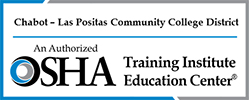 OSHA is stressing the importance of training all workers with reasonably anticipated occupational exposure to COVID-19 about the sources of exposure to the virus, the hazards associated with that exposure and the appropriate workplace protocols to prevent or reduce the likelihood of exposure. Training should be provided during scheduled work times and should include information about how to isolate individuals with suspected or confirmed COVID-19 or other infectious diseases and how to report possible cases.
OSHA is stressing the importance of training all workers with reasonably anticipated occupational exposure to COVID-19 about the sources of exposure to the virus, the hazards associated with that exposure and the appropriate workplace protocols to prevent or reduce the likelihood of exposure. Training should be provided during scheduled work times and should include information about how to isolate individuals with suspected or confirmed COVID-19 or other infectious diseases and how to report possible cases.
Workers required to use PPE must be trained on when to use PPE; what PPE is necessary; how to properly put on, use and take off PPE; how to properly dispose of or disinfect, inspect for damage and maintain PPE; and the limitations of PPE. OSHA’s Personal Protective Equipment Safety and Health Topics webpage provides information on training in the use of PPE, and OSHA’s Respiratory Protection Training Videos webpage offers a variety of respiratory protection training videos.
When the potential exists for exposure to human blood, certain body fluids or other potentially infectious materials, workers must receive the training required by the Bloodborne Pathogens (BBP) standard, including information about how to recognize tasks that may involve exposure and the methods, such as engineering controls, work practices and PPE, to reduce exposure. For more information, visit OSHA’s Worker protections against occupational exposure to infectious diseases webpage or Bloodborne Pathogens and Needlestick Prevention Safety and Health Topics webpage.
OSHA’s Training and Reference Materials Library contains materials developed by the OSHA Directorate of Training and Education as well as links to other related sites. The materials listed for Bloodborne Pathogens, PPE, Respiratory Protection and SARS may provide additional material for employers to use in preparing COVID-19 training for their workers.
